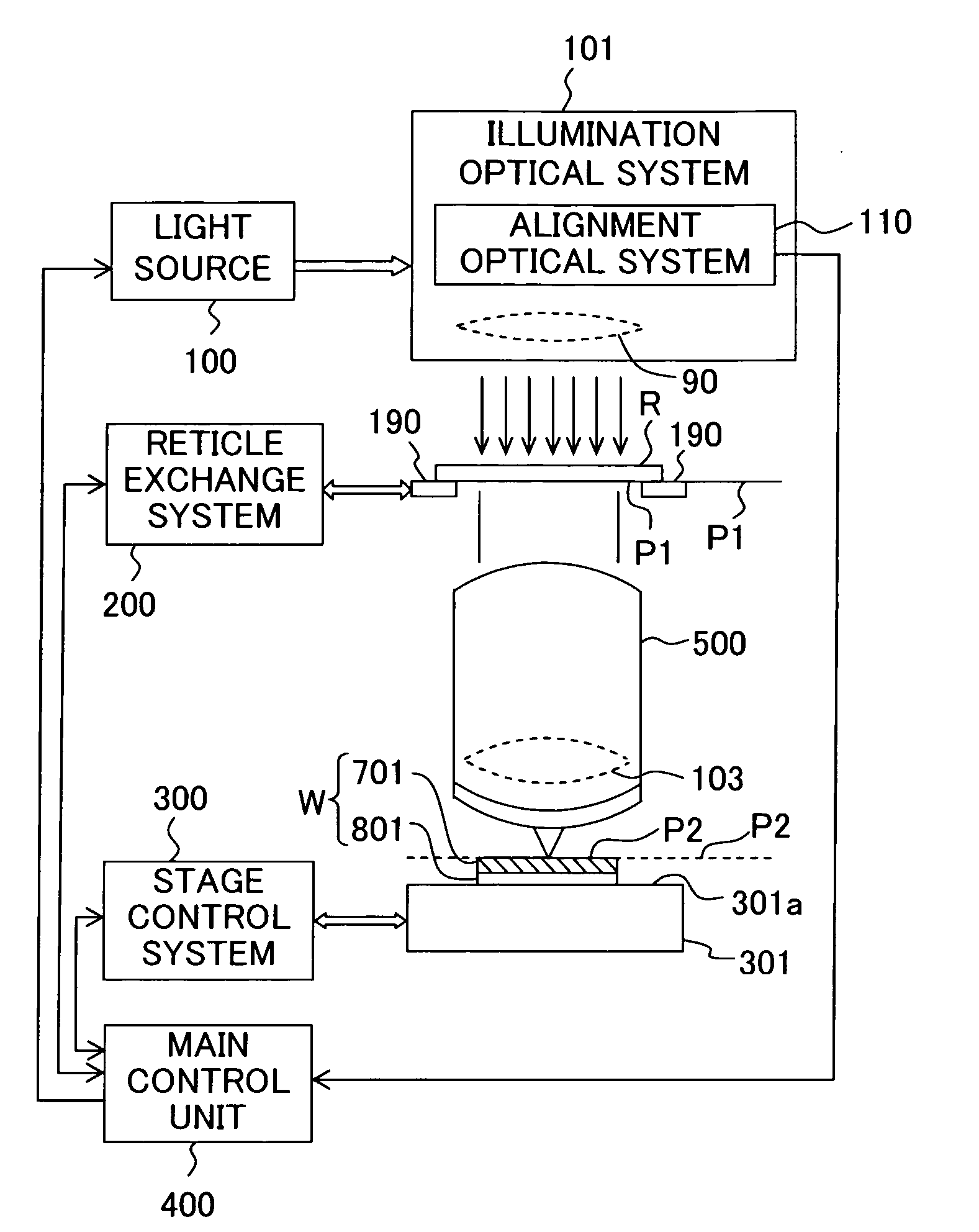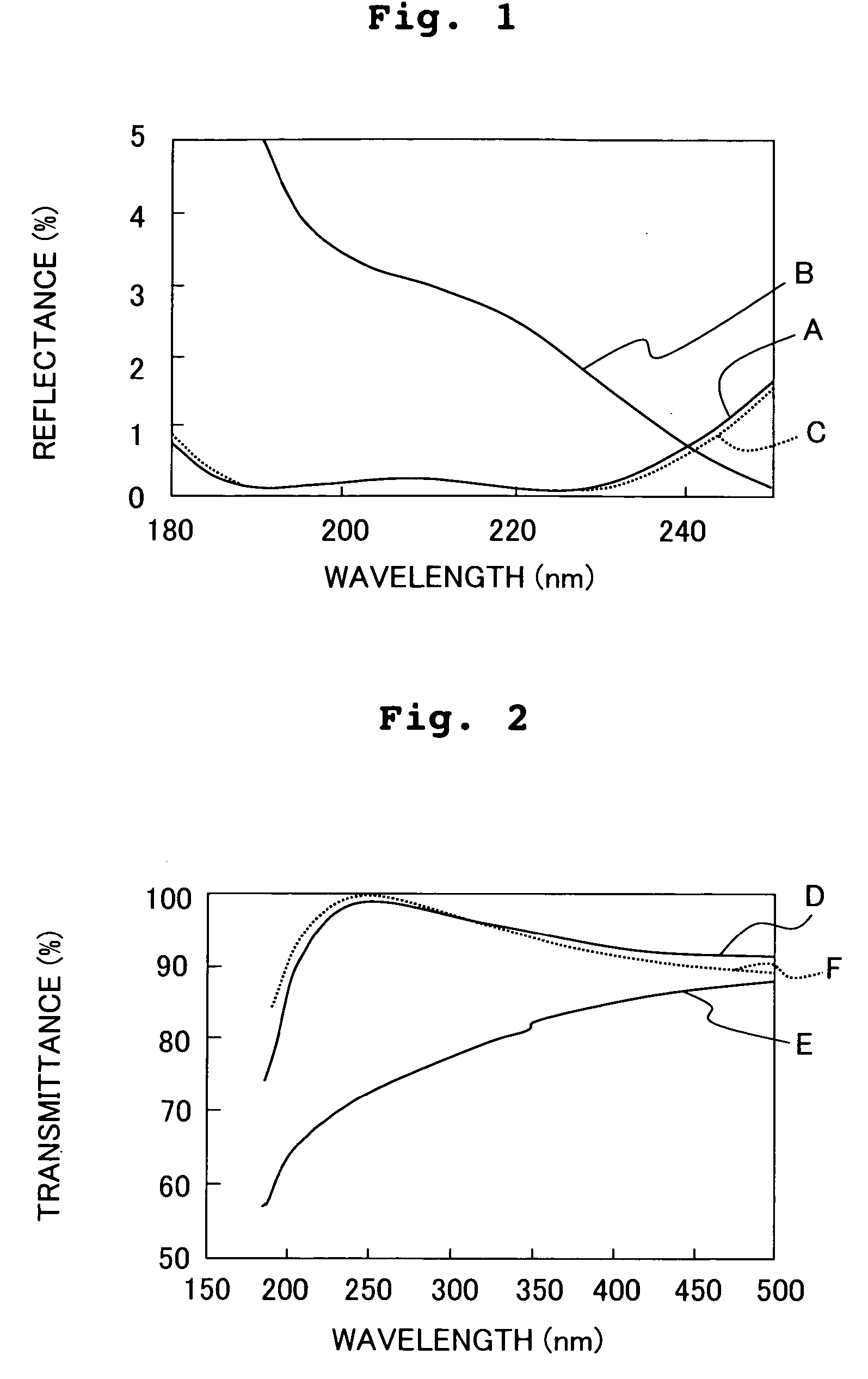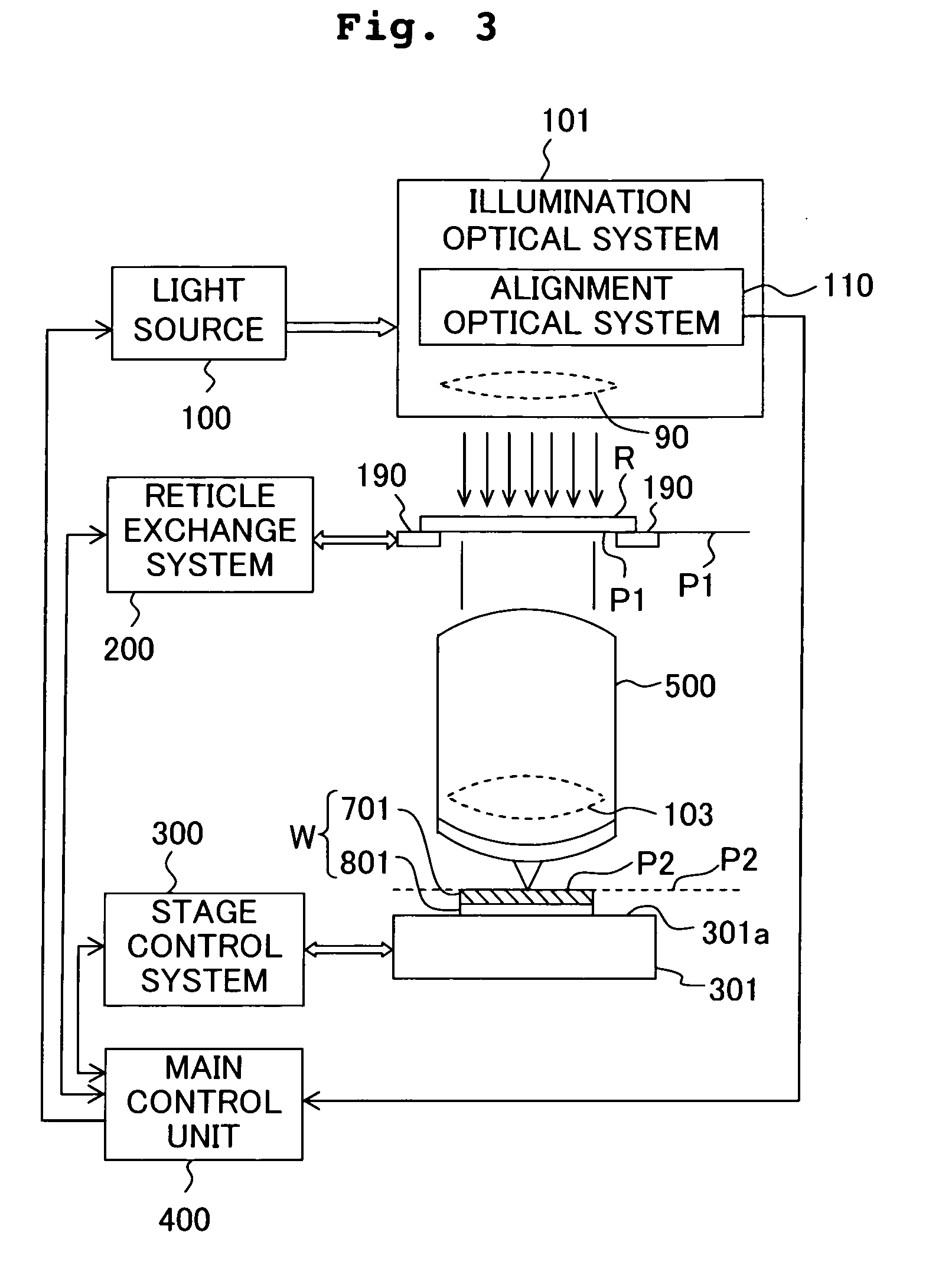Pollutant removal method and apparatus, and exposure method and apparatus
a technology of exposure method and apparatus, applied in the direction of optical radiation measurement, cleaning using liquids, instruments, etc., can solve the problems of uneven illuminance, decreased transmittance, and titanium oxide film beginning to be destroyed, so as to achieve the effect of quick removal of pollutants
- Summary
- Abstract
- Description
- Claims
- Application Information
AI Technical Summary
Benefits of technology
Problems solved by technology
Method used
Image
Examples
first embodiment
of the Present Invention
[0087] A first embodiment of the present invention will be explained below with reference to FIGS. 1 to 3.
example 1
[0088] In relation to a projection exposure apparatus based on the use of the ArF excimer laser, it is known that siloxane-based dirt components are decomposed and synthesized by the laser beam on the lens surface disposed most closely to the stage, and the silicon oxide film is deposited over a long period of time. The silicon oxide film is composed of pure SiO2, which is a deposit having no absorbance even in the deep ultraviolet region. However, if the silicon oxide film, which has a different refractive index, is deposited on the antireflection film, the reflection characteristic is deteriorated.
[0089]FIG. 1 shows the wavelength and the reflectance of the optical member. In FIG. 1, curves A, B, and C indicate the reflectance characteristics of an optical member A having a wide zone antireflection film (MgF2 / LaF3 / MgF2 / LaF3 / MgF2 / LaF3) applied onto a quartz substrate, a member B obtained by adhering the dirt on the optical member A, and a member C obtained by treating the member B...
example 2
[0095] However, the effect is insufficient in relation to the dirt when the pollutant includes organic substances such as hydrocarbon and inorganic substances such as ammonium sulfate. Accordingly, an etching solution (BOE / IPA) was prepared, which was obtained by mixing, at a ratio of 1:1, isopropyl alcohol and BOE obtained by mixing hydrofluoric acid (HF, 50% by weight) and ammonium fluoride (NH4F, 40% by weight) at a volume ratio of 1:10, for the following reason. That is, hydrocarbon is dissolved in isopropyl alcohol, ammonium sulfate is dissolved in water, and silicon oxide is dissolved in hydrofluoric acid. Therefore, when BOE / IPA is used as the etching solution, it is possible to quickly remove a variety of pollutants.
[0096] The dirt, which was actually generated in a relay unit (optical system) for carrying the excimer laser from a laser light source to a projection lens in a projection exposure apparatus based on the use of the KrF excimer laser, was tried to be removed wit...
PUM
 Login to View More
Login to View More Abstract
Description
Claims
Application Information
 Login to View More
Login to View More - R&D
- Intellectual Property
- Life Sciences
- Materials
- Tech Scout
- Unparalleled Data Quality
- Higher Quality Content
- 60% Fewer Hallucinations
Browse by: Latest US Patents, China's latest patents, Technical Efficacy Thesaurus, Application Domain, Technology Topic, Popular Technical Reports.
© 2025 PatSnap. All rights reserved.Legal|Privacy policy|Modern Slavery Act Transparency Statement|Sitemap|About US| Contact US: help@patsnap.com



